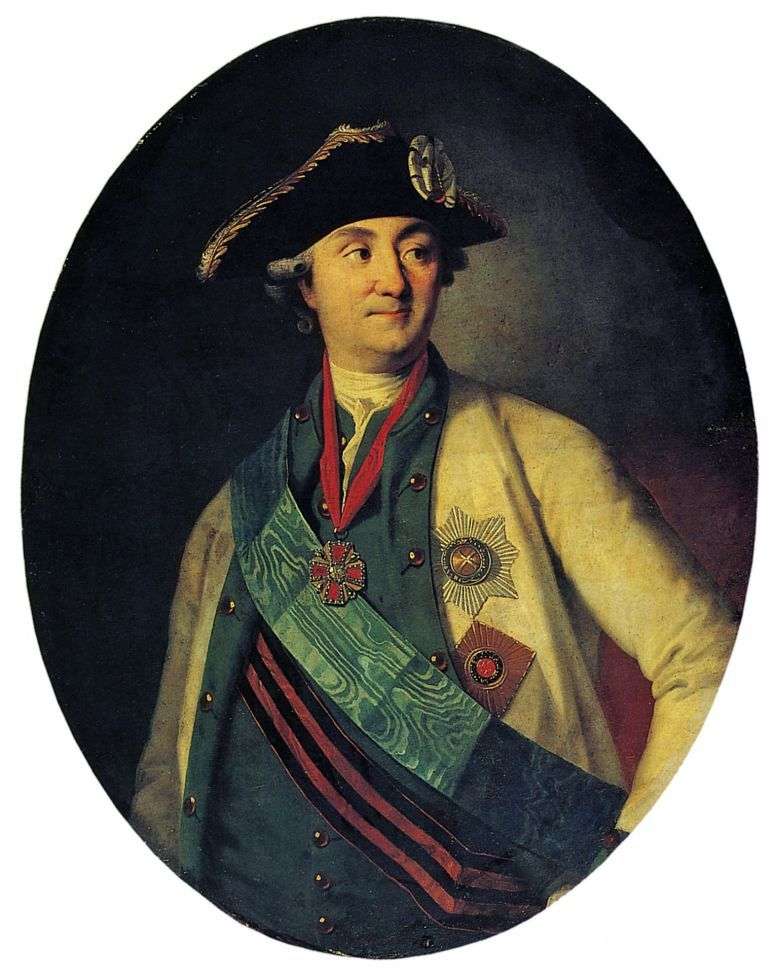
The works of KL Khristinek, as a rule, are modest: without the brilliance of the picturesque maestriia, which was the pride of foreign court artists. They are executed by a strict, accurate and “good” brush. Alexey Grigoryevich Orlov is depicted after retiring. However, he, according to the canon of the ceremonial portrait, is dressed in an admiral’s uniform with the orders of St. Andrew the First-Called, St. George of the 1st degree and St. Alexander Nevsky. A. G. Orlov, general-anshef – One of the five brothers who rose up under Catherine II. As the most gifted and energetic of the brothers, he was the initiator of the palace coup in 1762, succeeded, mainly thanks to his order. He forced Peter III to sign the act of abdication; with his participation there was a final catastrophe in Ropsha.
At the time of Catherine’s accession to the throne, Orlov was promoted to major general. He personally did not take part in state affairs, he often carried out his plans through the brother of Gregory, to whom he had great influence. In 1765, Orlov was sent by Catherine to the south to prevent the uprising prepared there among the Cossacks and Tatars. The first Turkish war caught Orlov in Italy; from where he sent to St. Petersburg his plan of military operations in the Mediterranean and was appointed head of the whole enterprise. In this role he remained until the end of the Turkish war and achieved important successes; for the victory at Chesma he was awarded the title of Chesmensky. During his stay in Italy, in 1773, he seized, on Catherine’s secret errand, the impostor Princess Tarakanov, who appeared here.
At the conclusion of the Kuchuk-Kainardzhysky peace, Orlov experienced, on account of his brother’s fate, the coldness of Catherine, and in December 1775, at his own request, was dismissed from his service. Living a broad life in his estate near Moscow, he gained a high profile among Muscovites generous hospitality. His passion was racing; from its stables came the first famous Oryol trotters, obtained by combining the breeds of Arab, Frisian and English. With the accession of Paul I, Orlov’s position became dangerous; on the order of the emperor, he had to carry his crown in front of the procession when transferring the body of Peter III from the Alexander Nevsky Lavra to the Peter and Paul Cathedral. Orlov succeeded, however, in safely getting out of Petersburg abroad, where he lived during the entire reign of Paul I. Returning to Moscow under Alexander I,
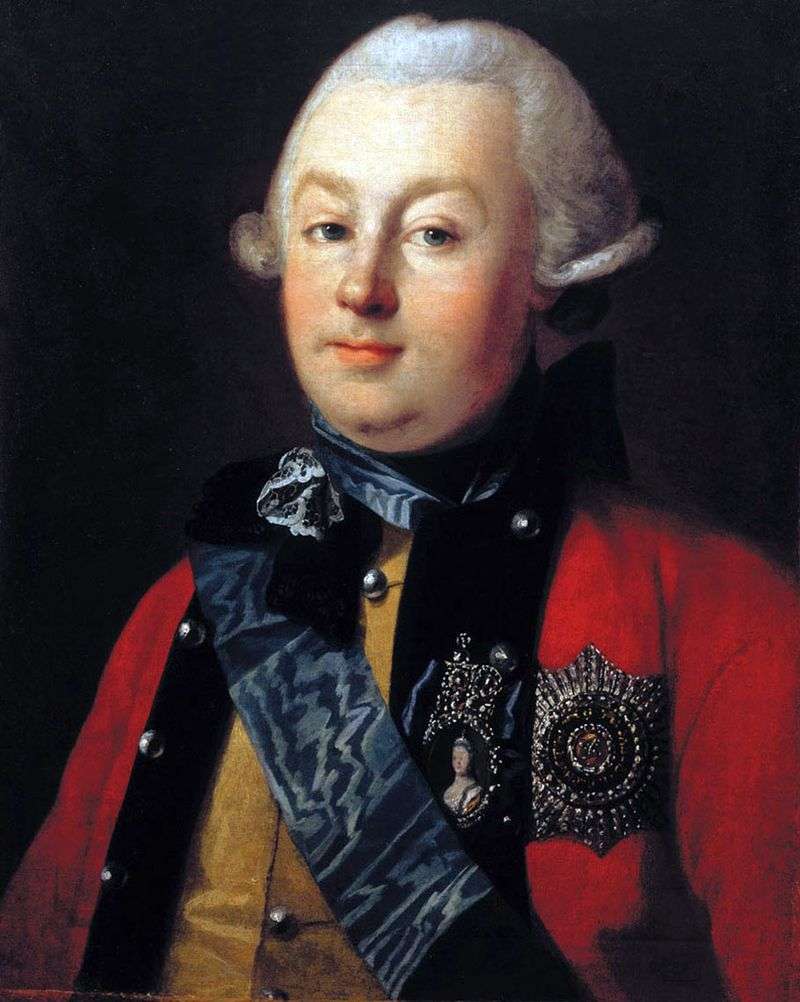 Portrait of Prince GG Orlov by Karl Ludwig Christinek
Portrait of Prince GG Orlov by Karl Ludwig Christinek Portrait du comte A. G. Orlov-Chesmensky – Karl Ludwig Khristinek
Portrait du comte A. G. Orlov-Chesmensky – Karl Ludwig Khristinek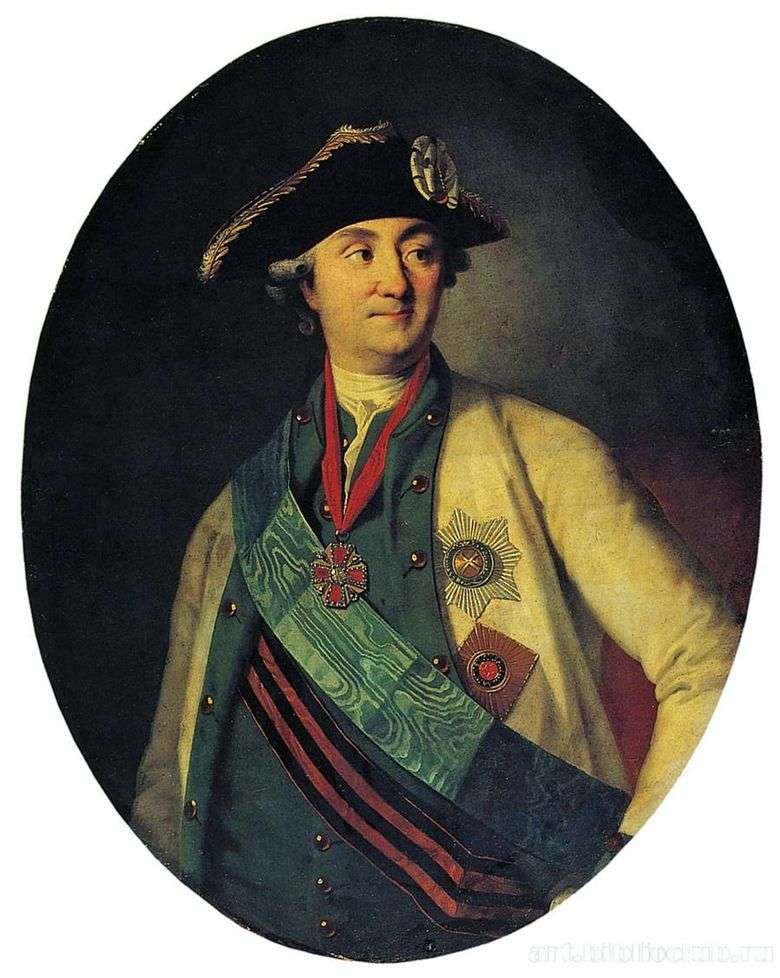 Retrato del conde A. G. Orlov-Chesmensky – Karl Ludwig Christenak
Retrato del conde A. G. Orlov-Chesmensky – Karl Ludwig Christenak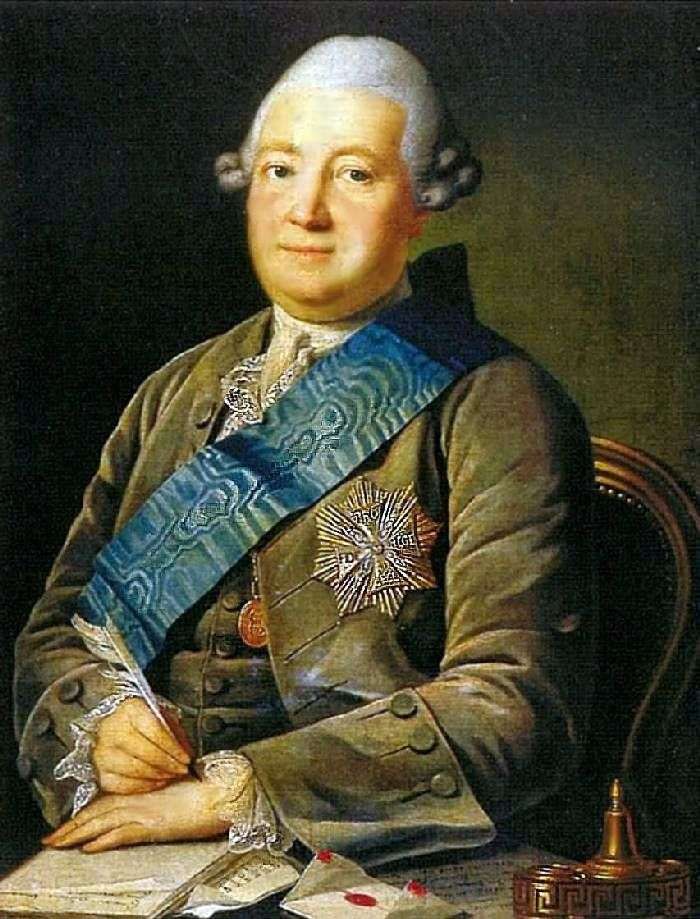 Portrait of Adam Vasilievich Olsufiev by Karl Ludwig Christinek
Portrait of Adam Vasilievich Olsufiev by Karl Ludwig Christinek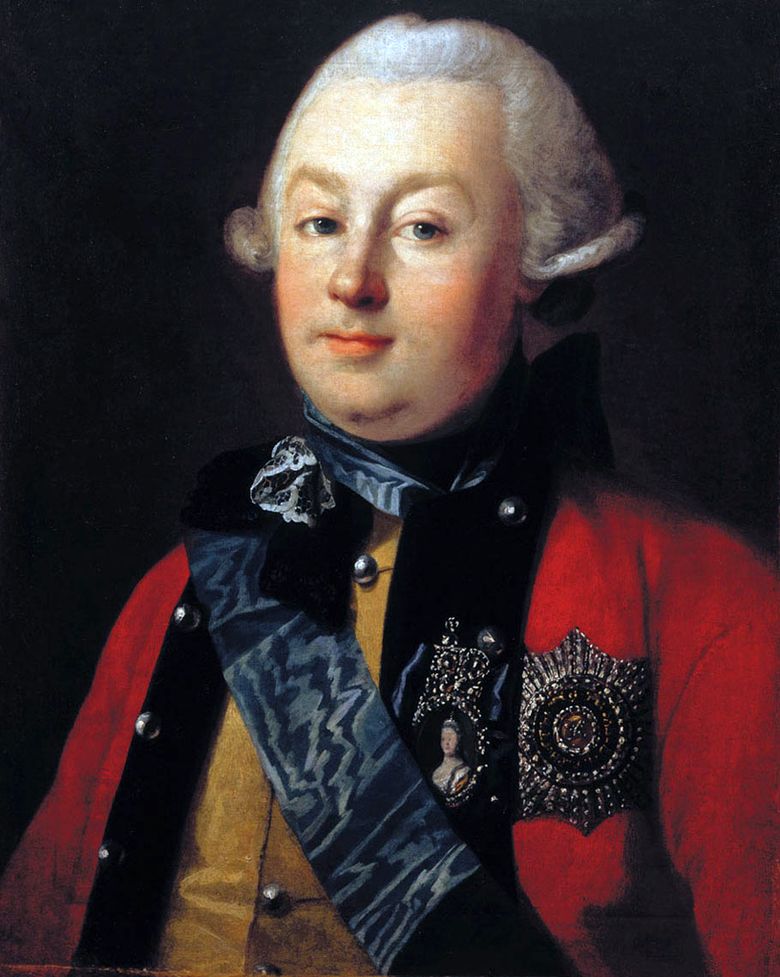 Portrait du Prince G. G. Orlov – Karl Ludwig Khristinek
Portrait du Prince G. G. Orlov – Karl Ludwig Khristinek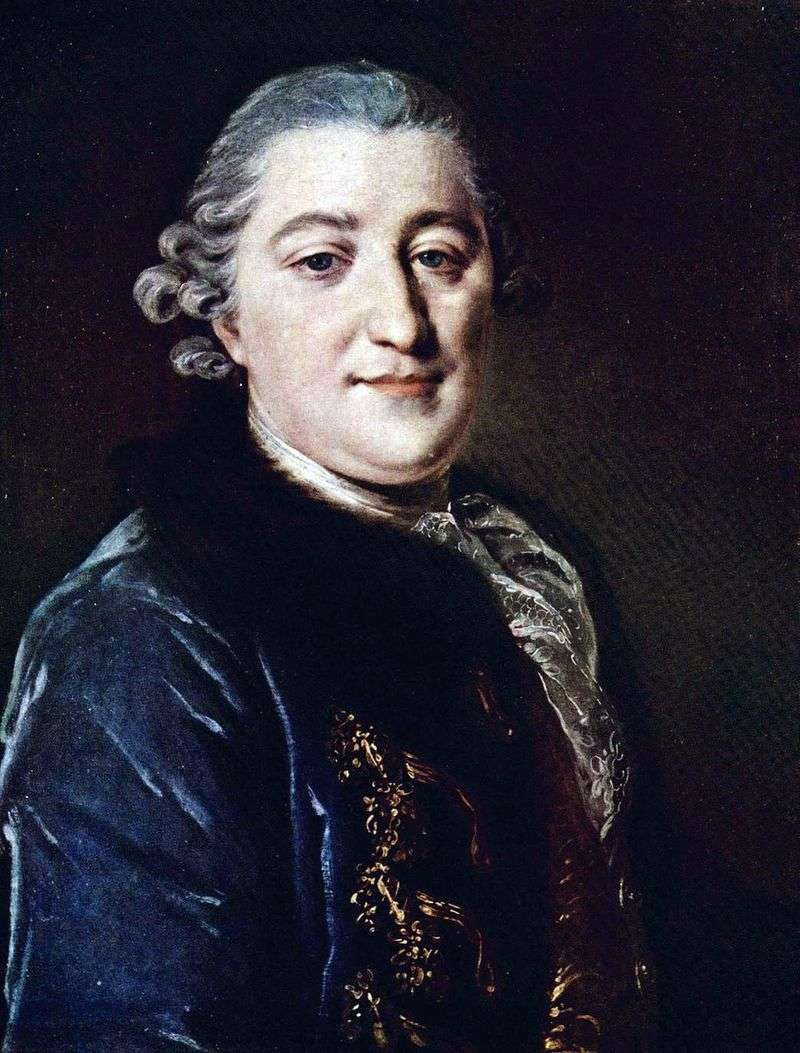 Portrait of Count Ivan G. Orlov by Fyodor Rokotov
Portrait of Count Ivan G. Orlov by Fyodor Rokotov Portrait of F. G. Orlov by Dmitry Levitsky
Portrait of F. G. Orlov by Dmitry Levitsky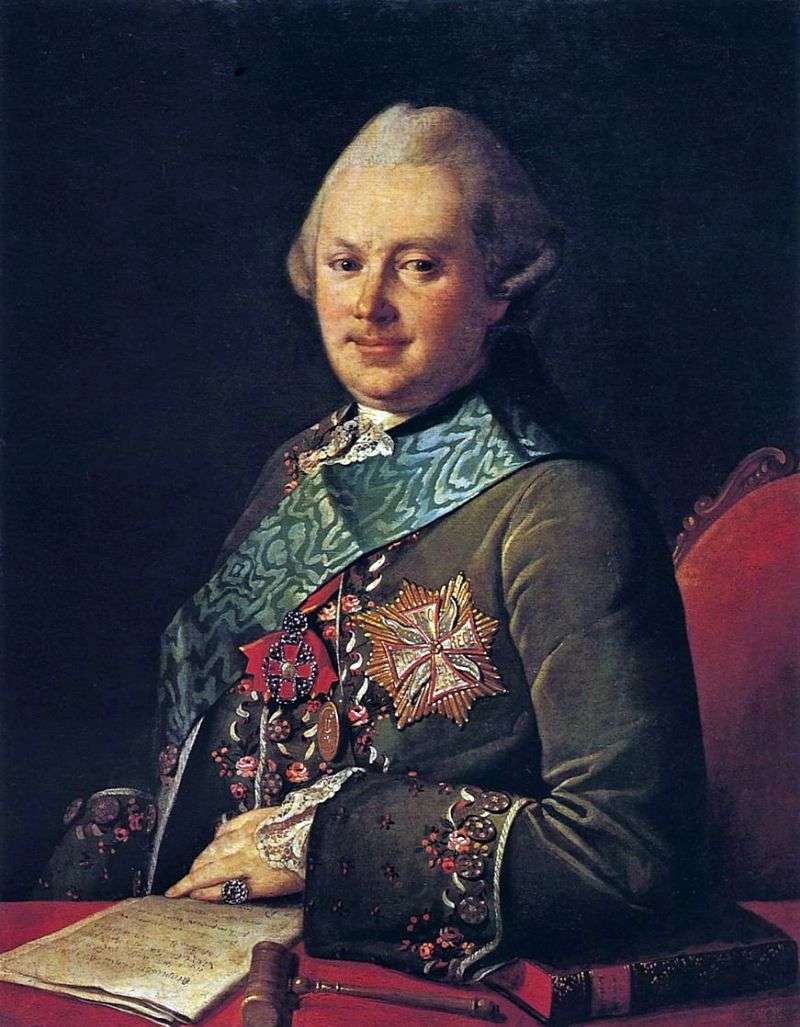 Portrait of Prince AA Vyazemsky by Carl Ludwig Christinek
Portrait of Prince AA Vyazemsky by Carl Ludwig Christinek